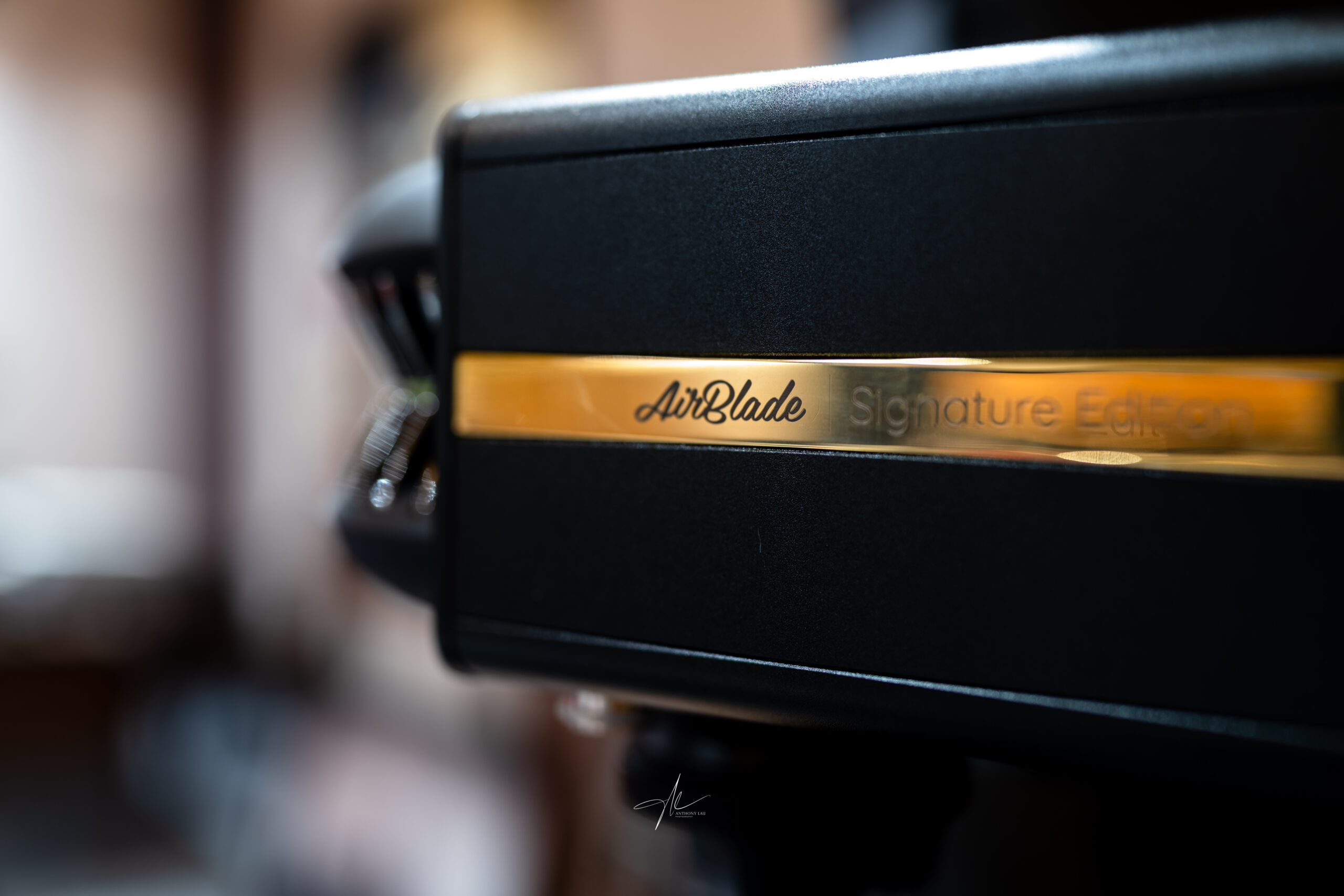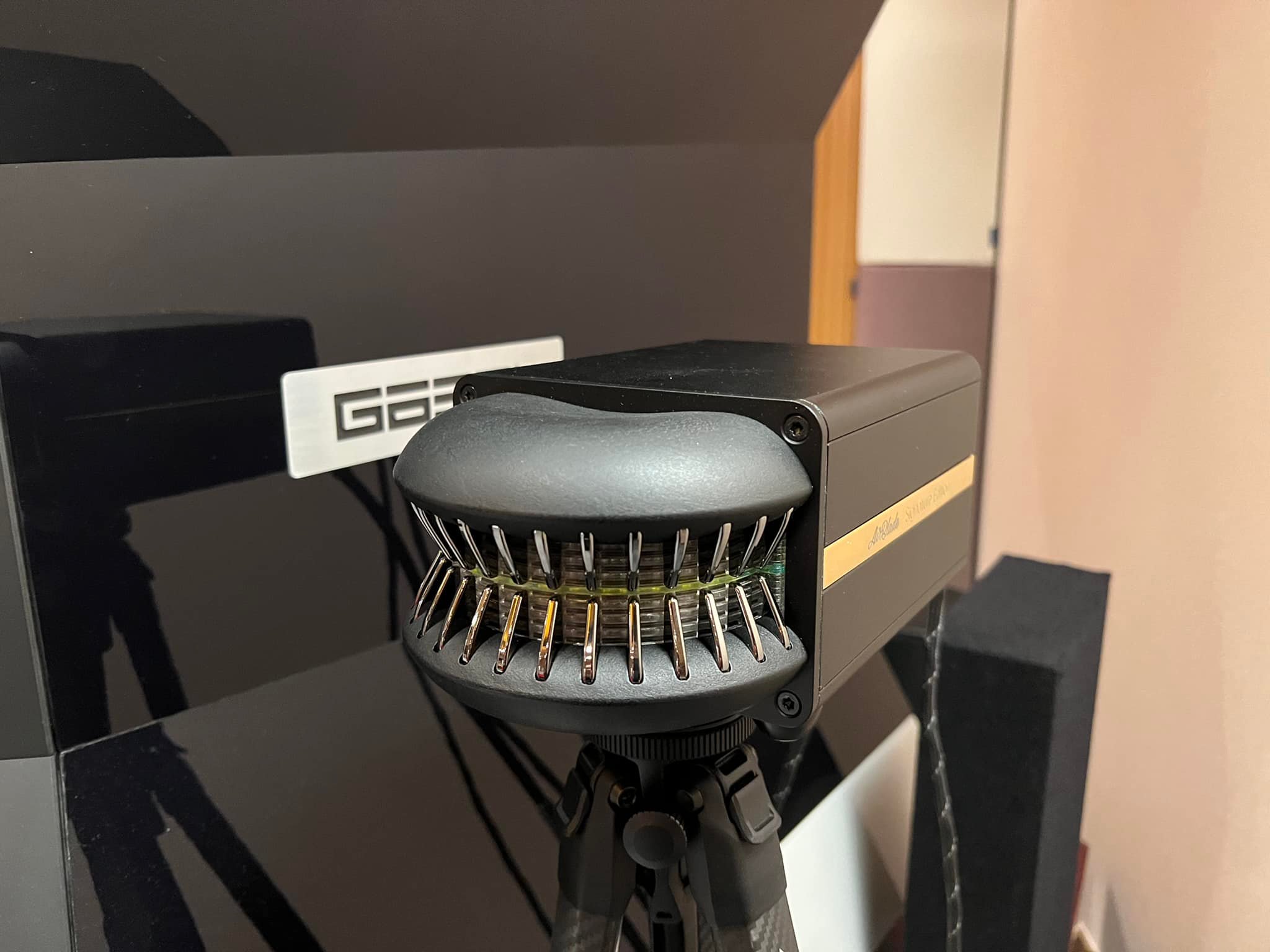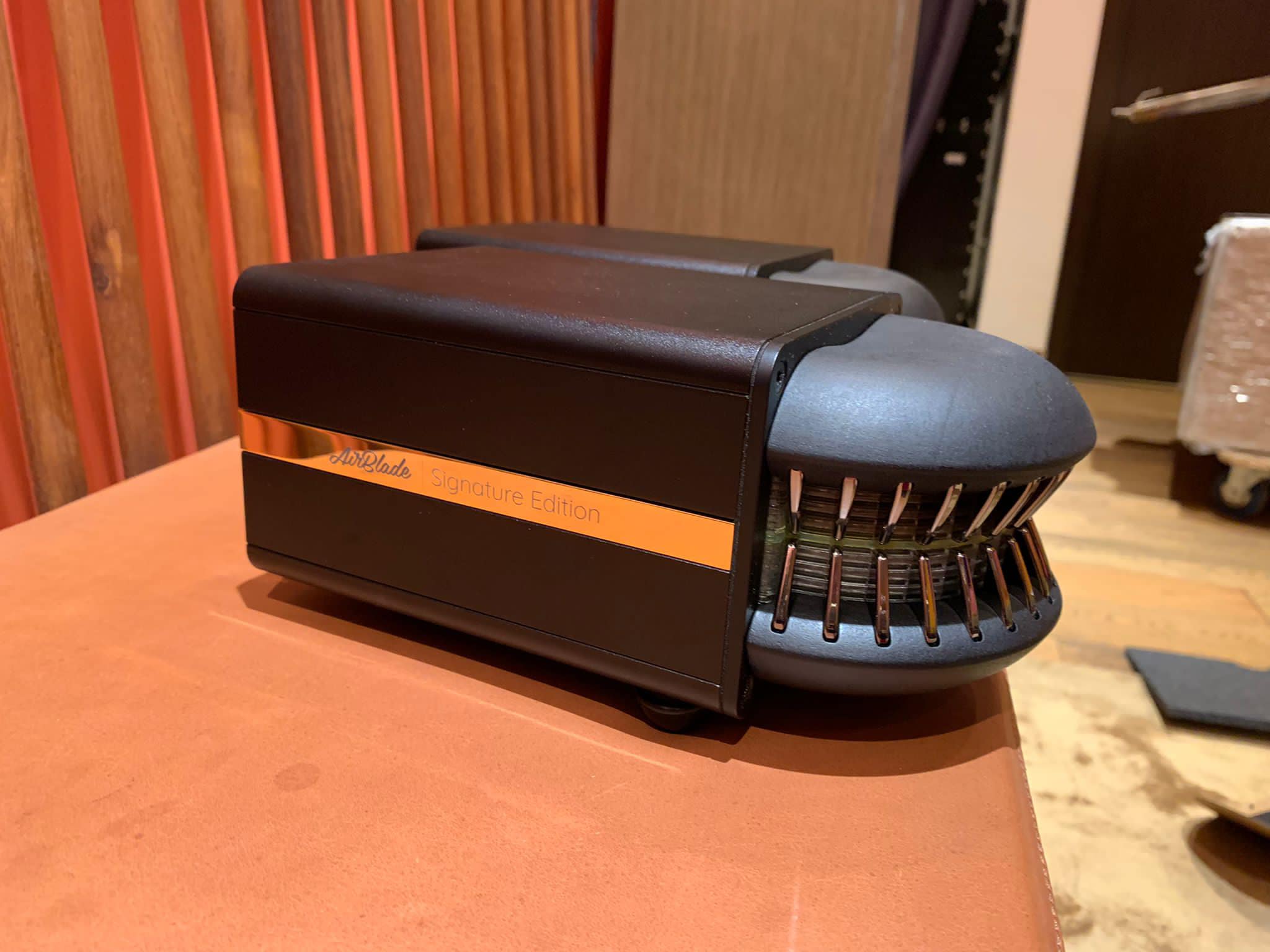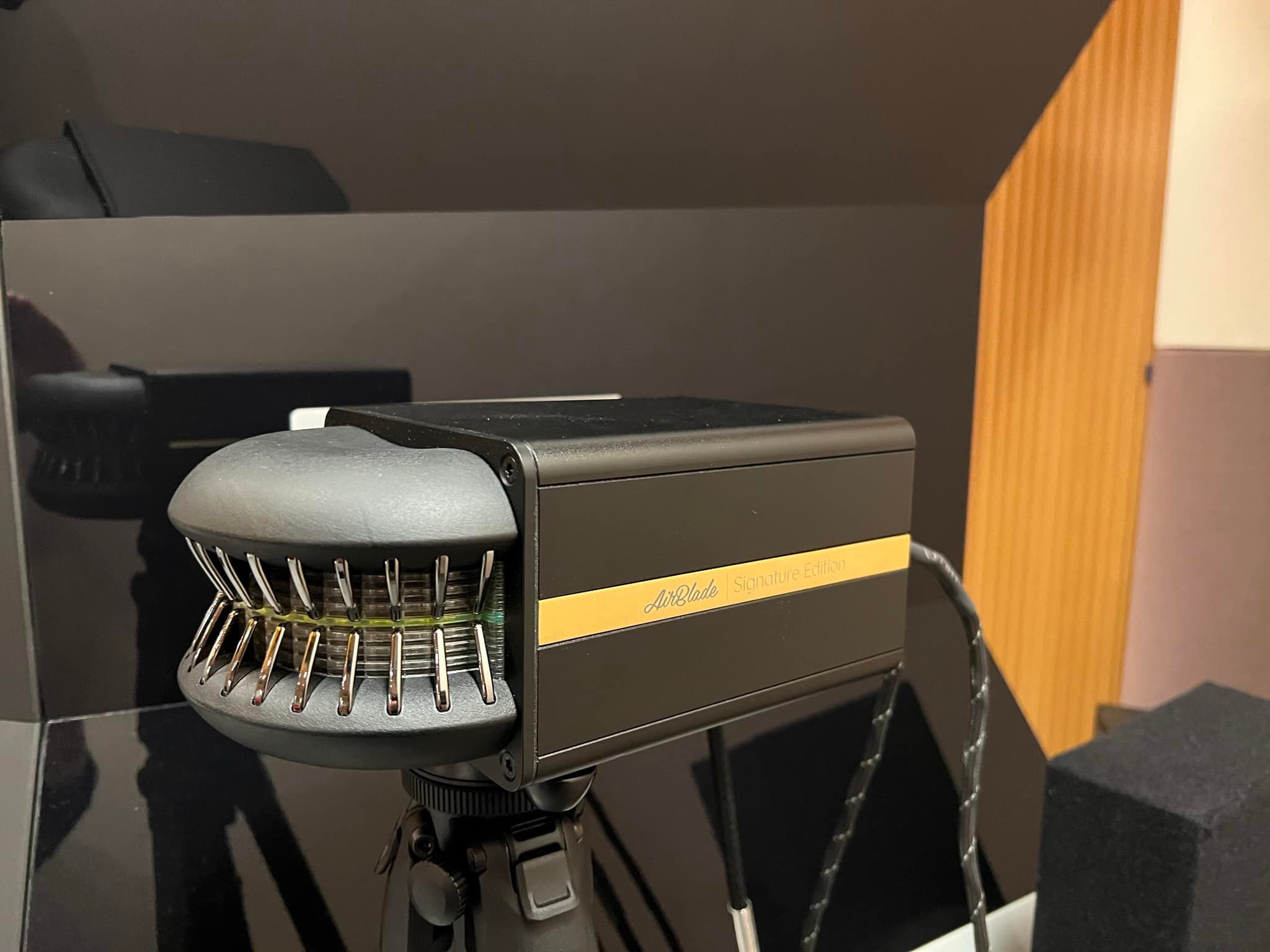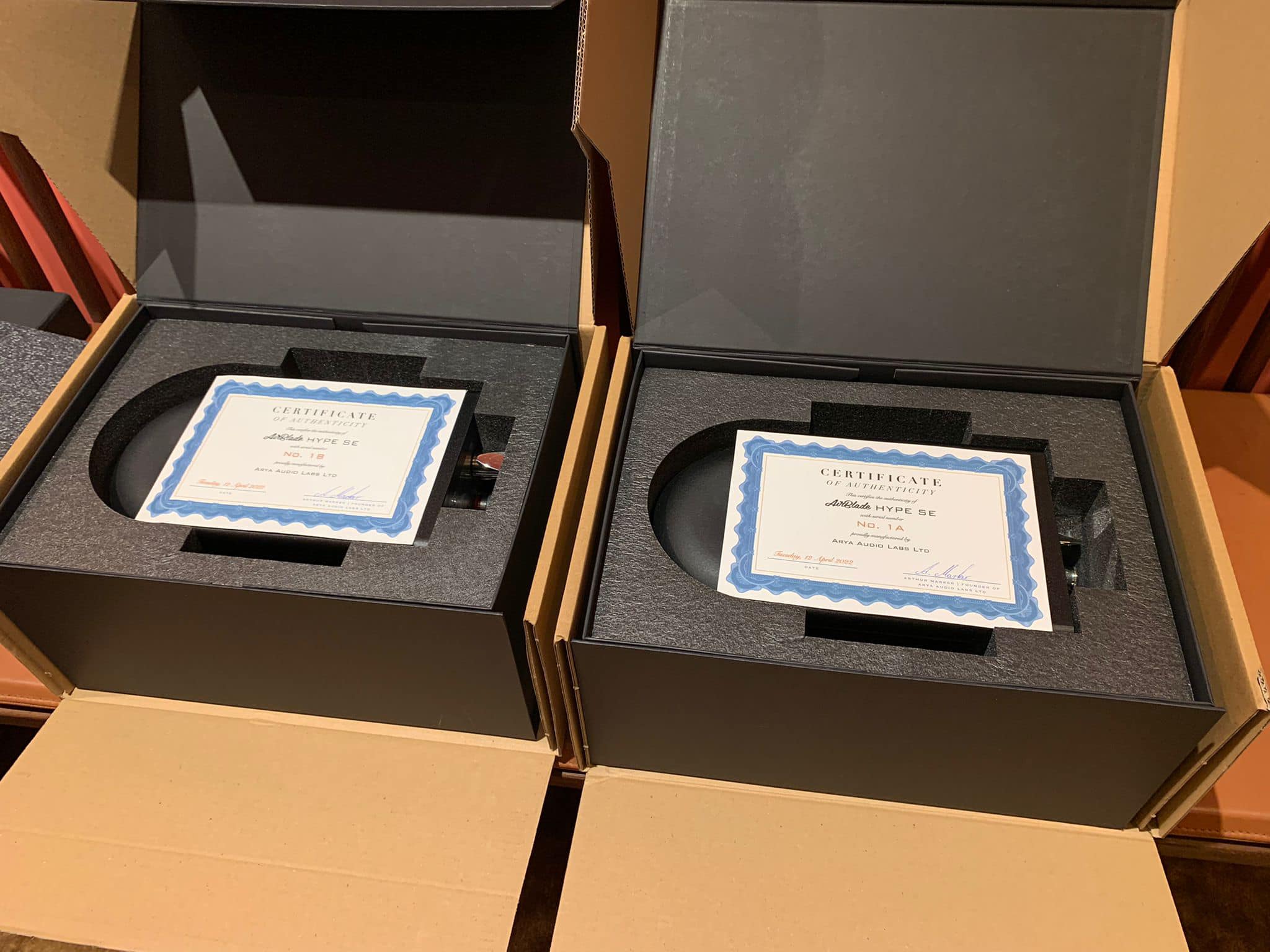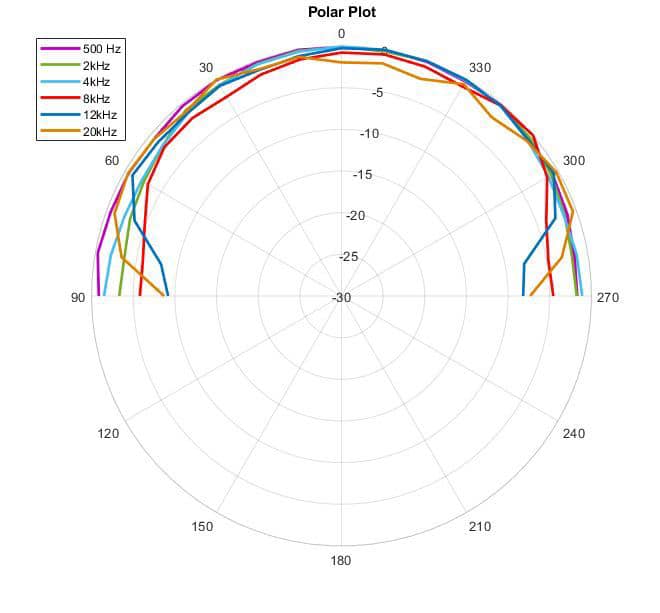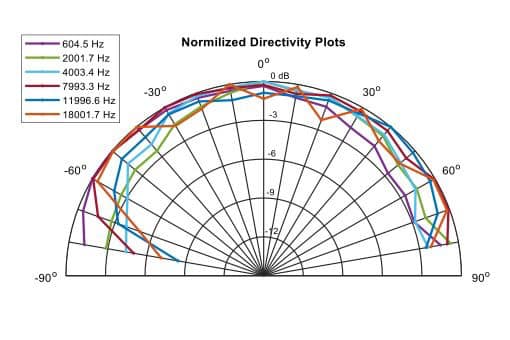The Magnum Opus by Arthur Marker - Air Blade Signature Edition
Resolution of Singing Diction Left me Breathless
The Air Blade invented by Arthur Marker took my breath away two years ago. It still does as of today. Aaron Kwok, Asia’s mega star, got a pair for his system after auditioning them for 15 minutes. Ever since its inception, all showrooms of Audio Exotics in Hong Kong and Singapore permanently feature it. Without them, the picturesque experience is instantly reduced to 2D from 3D. Real instruments radiate more than 180 degree independent of frequency range. On the contrary, behaviour of conventional tweeter’s dispersion angle (max around 60 degree) narrows rapidly as frequency goes up higher.
The Air Blade is often misunderstood as a super tweeter, but it is NOT. It is a tweeter with 180 degree dispersion with minimum roll off even at very high frequency range. Skepticism of it often arises because human eyes easily conclude it is an unnecessary add-on, usually references to presence of tweeters (diamond, ceramic, beryllium etc) in the main speakers reaching stratospheric range of 30khz - 40khz, albeit with very narrow dispersion angle. Dispersion is different from extension. The Air Blade thus augments the tremendous deficiency of all conventional tweeters regardless of its frequency extension and built materials. Physical placement of Air Blade matters to integration with the main speakers, on top of level (0db, -3, -6, -9, -12) and crossover frequency range (3.5K, 2.4k, 1.6k and 1.0k).
Never would I imagine Arthur Marker had been quietly pushing the envelope further - the Air Blade Signature Edition. It has the most advanced diaphragm material of any driver complemented by WBT pure silver binding posts and Mundorf silver foil capacitors, and ELMA Switzerland rotary switches. The chassis is manufactured by advanced Metal Injection Molding (MIM) technique finished with top notch PVD gun metal coating. The acoustically optimised cabinet is made of 12mm thick aluminium slabs (the chassis of first generation of air blade is made of wood), which adds significant mass to grounding because aluminium is an efficient electrical conductor. The inserts of the chassis is beautifully crafted. The whole object is simply an industrial art of the highest caliber.
The foil (diaphragm) is made by amorphous material, which has a chaotic molecular structure preventing resonance modes to develop. This aspect may seem negligible for most but research must start at the molecular level to distillate perfection. It has to be very thin and yet with high mechanical resistance. For example, Kapton is good for PCB but not the most ideal choice for speakers because of its crystalline structure is vulnerable to buildup of resonance modes. The material of the foil is a special design for the signature edition.
Meticulous engineering feat and artisanal craftsmanship lead to staggering measurement results. The company who made the measurements for Air Blade Signature mistook their system was out of order upon witnessing the first directivity plot. The technicians repeated the test three times before they were convinced. Measurement prove it is the first ever driver achieving the widest and most uniform dispersion independent of frequency range! Though the scale is not exactly the same, the directivity charts (in the picture session below) clearly illustrate the improvement of the signature edition over the normal edition.
I received the first pair in the world 3 weeks ago and went through many intensive listening sessions in order to comprehend the technical mastery of it thoroughly. I wonder why would Arthur make a signature version of it when the stocks of normal version cannot keep up with the demand from connoisseurs. It took me two weeks to integrate the signature with the Goebel Divin Majestic speakers alongside acoustic adjustments. I also made a decision to adjust the physical position of the gigantic speakers by moving both channel away from the side wall by 4.5 inches maintaining the toe in angle unchanged. Such labor is all meant to do justice for Arthur’s magnum opus.
The realism of any type of vocal regardless of genre is staggeringly akin to human flesh singing inside the room. The most indiscriminating test is to record a few audio clips by iPhone 13 and sent them to a sample of non-audiophile group containing professional vocalist recital musicians playing classical instruments, pop singer, and students studying performing arts at music institute. 15 out of 18 responded to me in such similar context, “Did you record this next to the singer inside a studio? Because I can feel his palate moving and tongue twisting so clearly. I could easily visualise how the singer shape the vowels and articulate consonants with energy.” Consistent feedbacks drove me to the study of diction in singing so that I can share my experiences professionally.
Basics of Diction in Singing
Diction is the distinctiveness of speech. In singing, it means enunciation of a vocalist’s expression. The clarity in the pronunciation of lyrics is the soul bridge between the singer and the audience. The lyrics must be clear so that listeners could comprehend the meaning of the song. Excellent articulation of vowel (A, E, I, O, U) in turn improves the pronunciation of syllable, a unit of pronunciation with one vowel, with or without consonants. (For instance, there are two syllables in water and three in inferno.) Projection of vowel opens the mouth with airflow going out. On the contrary, diction of consonants (b, d, f, h, s, t, v, m, z) requires closing the mouth, and airflow is trapped inside the mouth. Consonants also tense the tongue, which ought to be relaxed during singing. Researches have proven that consonants (b, d, f, h, s, t, v, m, z) average 0.058 seconds each in speech and 0.108 in song. The semi-vowels (l, m, n, r) average 0.145 in speech and 0.354 in song. Vowels average 0.280 seconds in speech and 0.797 in song.
Singing flourishes only when beautiful tone radiate from singer’s throat and illuminate the meaning behind the lyrics. Yet consonants that accomplish the meaning often pollute tone beauty to a certain degree. The two contradictory forces are: the musical element of the voice (accurate, sustained vowels) and the expressive communication of speech (well-defined consonants). The musical use of voice necessitates a knowledge of maintaining beautiful tone constantly. In contrast, the communicative use of the voice requires a command of ever fluctuating symbolic sounds (consonants). Singers must manage two contradictory elements to deliver beautiful tone in real time.
Digestion of reading materials on singing diction is a serious wake up call. At the highest end, we should demand much more than a solid/stable imaging in front of us. Resolution of diction is never an element of evaluation in high end audio. On the contrary, tonality dominates most of the evaluation criteria. Descriptions of neutrality are usually by means of relativity such as warmer side of it or cooler side of it. The sharing perspective however is unprecedented here.
I am completely blown away because it is so much easier to discern the diction of the world’s greatest vocalists telling his/her stories. For example, Bob Dylan is the most identifiable pop vocalist with the most over exaggerated emphasis on his vowel sounds ever. Other pop singers with clear diction includes Kevin Cronin, lead vocal of REO Speedwagon, Mariah Carey, Frank Sinatra, Karen Carpenter, and Don Mclean etc. Julie Andrews (Sound of Music) is another great example. The presence of air blade signature rewards me discovering her excellent enunciation of consonants at the beginnings and ends of her words. She also utilized vibrato at the end of her phrases to avoid breathiness.
Joan Sutherland, one of the most acclaimed soprano in the 20th century, had an extraordinary tone but were often criticised by experts (including German Baritone Dietrich Fischer-Dieskau) with poor diction. I don’t understand why the critics said so until now. On the other hand, the diction of Dietrich is renowned with the most clearest voice ever in spite of boatloads of consonants in the German language. Yet, each words of him radiated energy so clearly even though airflow of singing consonants are trapped inside the mouth. The skill is to execute consonants fast with energy. That requires decade long training. I am extremely touched by the voice of Wong Ka Kui (黃家駒), the lead vocal of BEYOND (a local band in HK in the 90s) who could deliver powerful consonants defining his style.
The vividness of diction brought about by the Air Blade Signature transcends the listening experience of vocal because dispersion capability of it amplifies the contrasting elements in singing. It makes me appreciate much more about the power of language.
The signature edition develops the proprietary merits of the normal version to the extreme. That triggered me and my crew spending 5 hours to physically reposition the Goebel Divin Majestic Speakers that weight 530kg per channel in order to achieve seamless integration between the main speaker and the Air Blade Signature. The contextual backdrop of reviewing them is holistically complicated. Simple comparisons between the normal and the signature edition does not make sense given the change of parameters involved. Reporting subjective listening impressions of different piece of music does not make solid reference. I rather focus in depth on one subject of established discipline with voluminous literature for cross references.
The famous german philosopher, Hegel once said, “The forms of human thoughts are displayed and stored in human language.” The lyrics of Texas Sky by Lori Liberman summarises the role of Air Blade Signature in Divin Lab, “You were like the Texas sky, born with lightning in your eyes. You left me breathless. And when you said good-bye, you stole the clouds and took the sky. And left me breathless. Like the endless Texas sky.”
